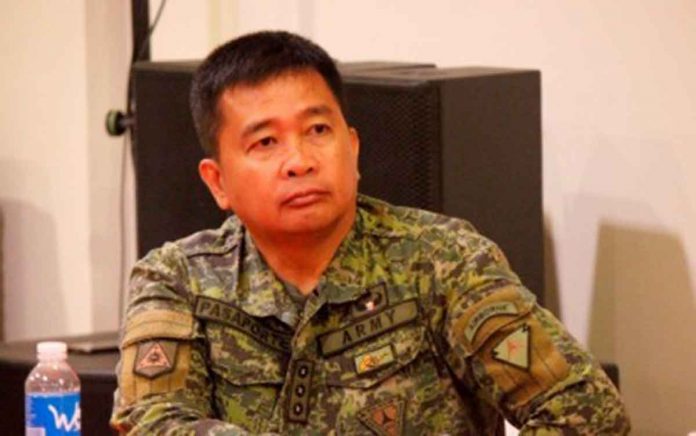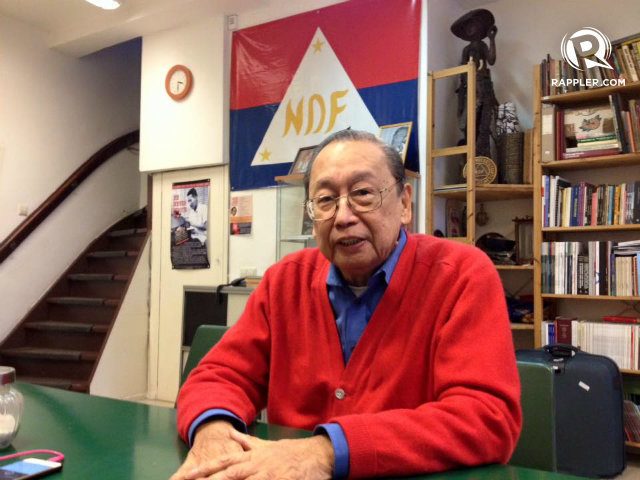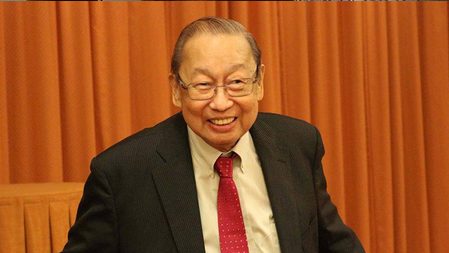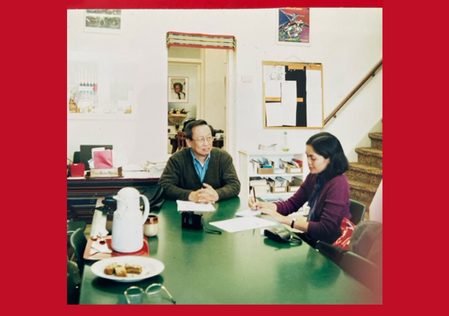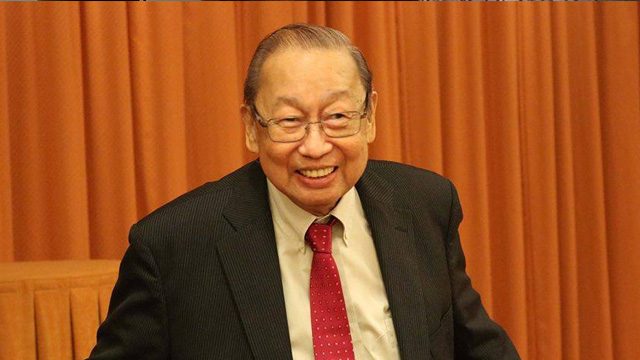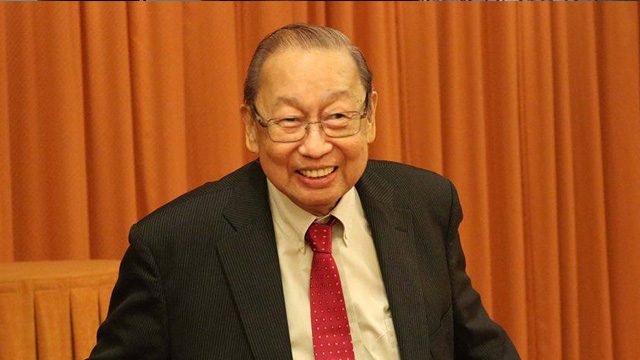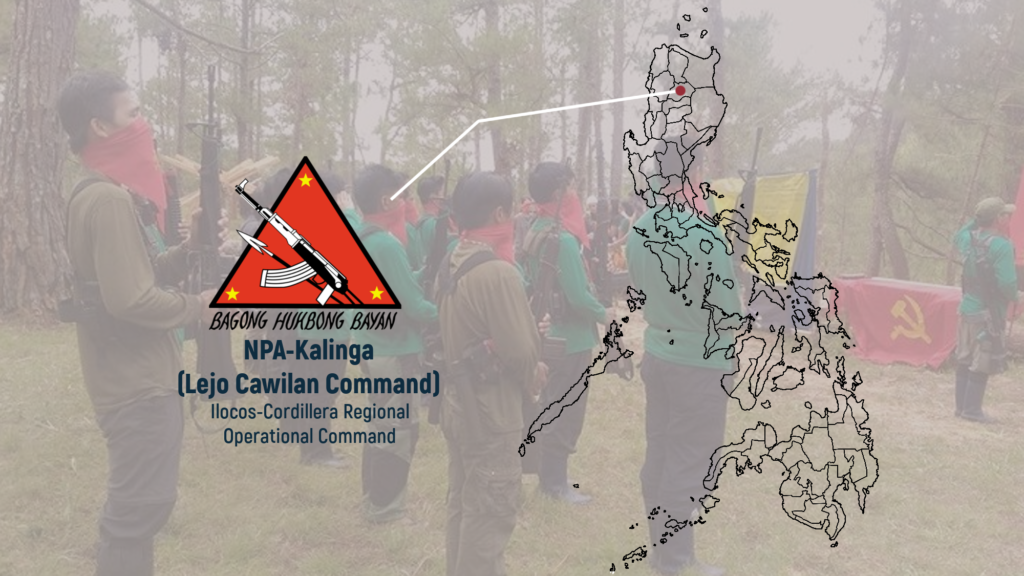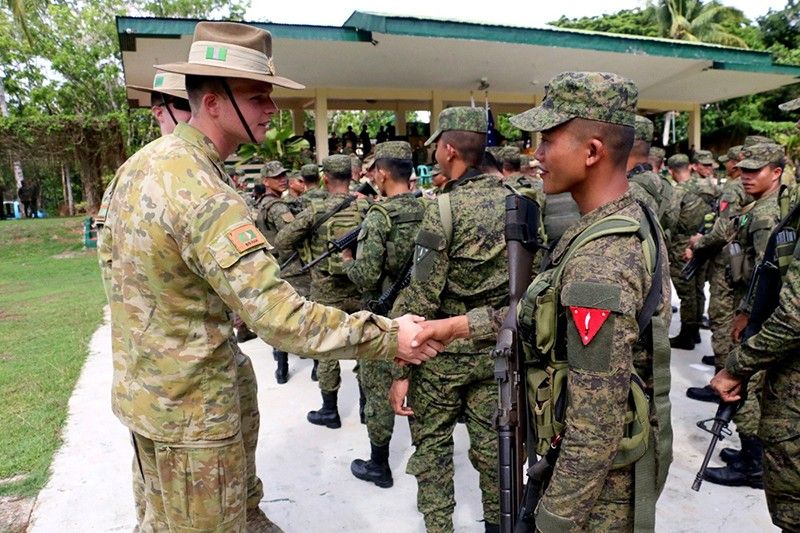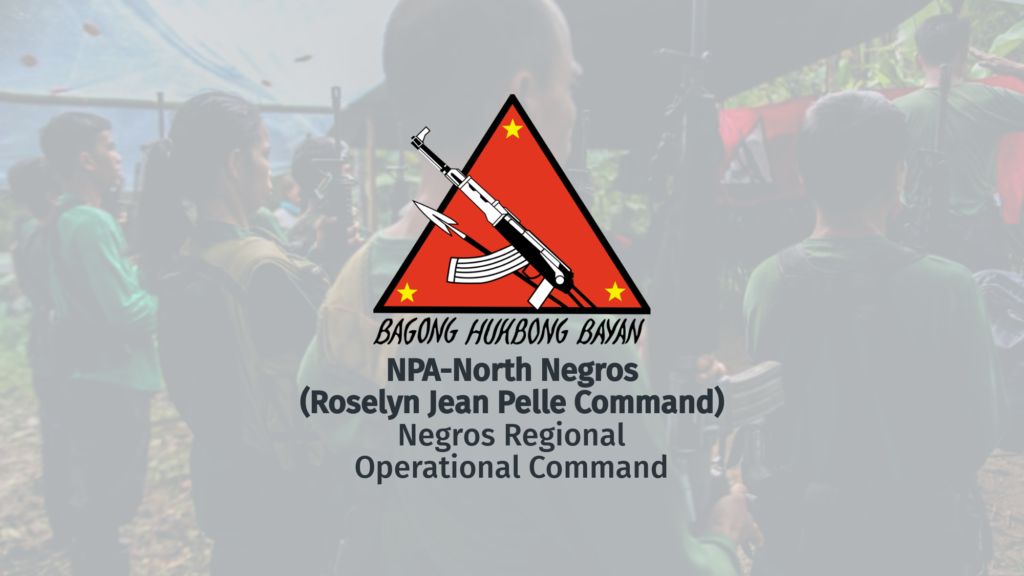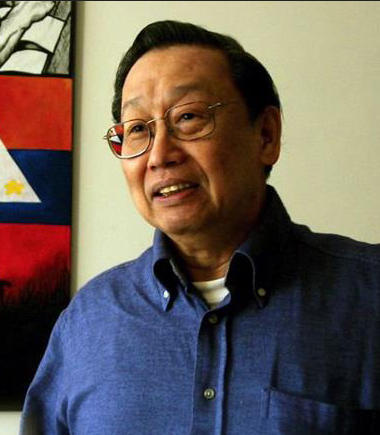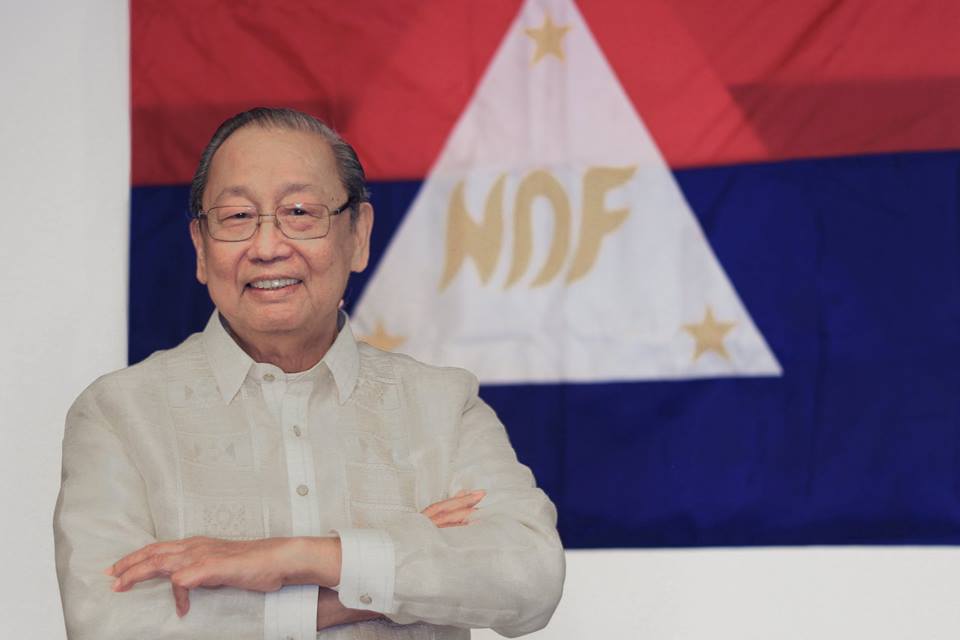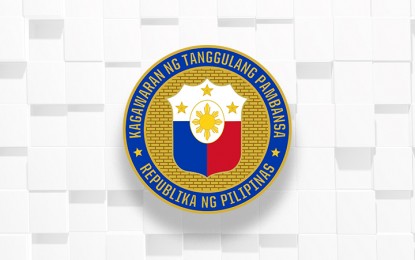Posted to Rappler (Dec 17, 2022): Joma Sison: Mao in Utrecht (By GLENDA M. GLORIA)
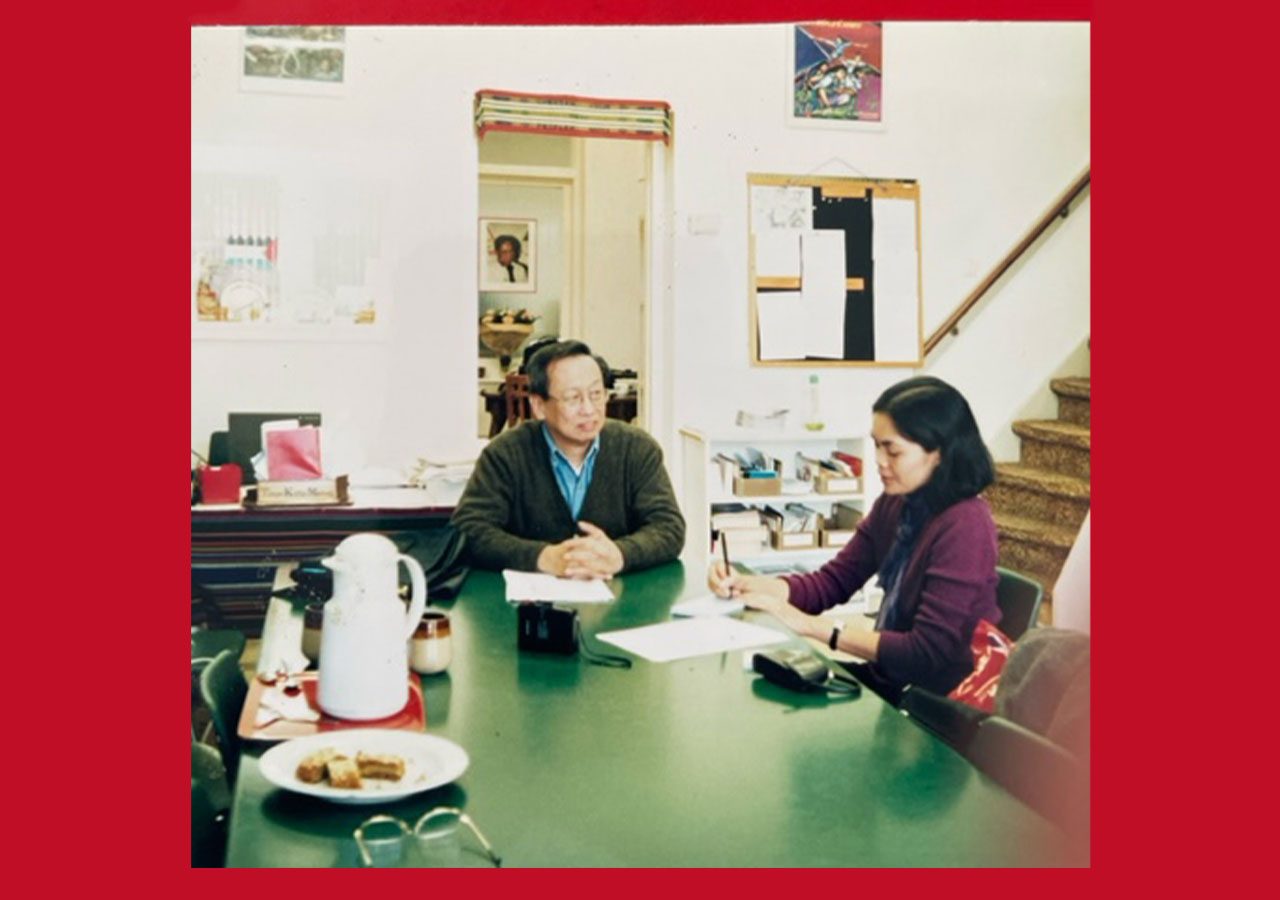 In a wide-ranging interview two decades ago, Jose Maria Sison talked about retirement, politics, his ex-comrades, and family
In a wide-ranging interview two decades ago, Jose Maria Sison talked about retirement, politics, his ex-comrades, and familyMANILA, Philippines – Jose Maria Sison led the world’s most stubborn communist rebellion, nearly four decades of that from thousands of miles away – in Utrecht, where he had been living in exile since 1987. He died on Friday, December 16, 2022.
We interviewed Sison on October 19, 2002 for Newsbreak magazine – at a time when the local communist movement remained in disarray and the European Union had just declared him a terrorist.
In the excerpts below, Sison talked about retirement, politics, his ex-comrades, and family.
What he has done
“At this point, you cannot even express regret. I have done my best. When I say that, assume may kahalong kahinaan, pagkukulang (there have been weaknesses, shortcomings), etcetera. Mga mali (mistakes). Part of the learning experience… part of doing better the next time. No regrets with shame. Not even if the movement failed to reach Malacañang.”
Growing old
Other Stories
CPP founder Joma Sison dies
(2nd UPDATE) Joma Sison dies at the age of 83, after two weeks of hospital confinement, says the Communist Party of the Philippines
Who is Joma Sison, the exiled leader of the CPP?
Sison was pivotal in the establishment of the modern communist movement in the Philippines
Jose Maria Sison ‘home’ in July
Sison adds Philippine government and rebel emissaries are set to meet in Norway from mid-June to lay the groundwork for formal peace talks“Ang pamana kong natitiyak, ‘yung isinulat ko at kung ano ang ipagpapatuloy ng iba. Bahala na sila (The legacy that I’m sure about is what I had written and what others would continue. It’s up to them.) Even before, I knew how to enjoy life in so many ways.
I enjoy reading a good book, a good exchange of jokes. There are things that as a young person you didn’t like to do but probably would want to try now that you’re old. I can’t think of any now. Let’s say, I lost my wife. I suppose age has something to do with it, but at 60, you’ve become very close to each other. Should she be away for just three years, perhaps I’d have a heart attack, or I’d be screaming my heart out.
Better to be widowed early in life.” [Laughter]
Place of retirement
“I’m old enough to think of retirement, but I don’t have the answer because I have not defined the answer. I let go of that thought. The old mindset was, you stay with whoever of your children agrees to have you. Or you go where you have grandchildren…but even the grandchildren are also growing old.”
Away from politics
“I sing, usually Spanish songs, the ’60s. I dance – chacha, samba, salsa. Singing, that’s been my relaxation for the past two years. I don’t want to sing in public because my timing isn’t good. But shame flies off the window whenever there’s a karaoke. At home, I sing alone. Sometimes, I force Julie [Sison’s wife] to sing with me.”
A changed world
“Europe has changed a lot. Indeed, the whole world has changed – the corrosion of socialist countries, the blatant call for privatization, [the rise of] the revisionists, those who appear to be socialist but whose values and ideals change, using the free market. You have to have a wide historical view…. I don’t believe that history would end at any point, even if it reaches communism. The deterioration of the capitalist system continues.”
Lessons from history
“Before, there was this siege mentality – it was a social democratic critique, this rush to socialism and being oppressive [once in power]. You can draw a lesson from that.
Because of the technology available, you cannot even try to clamp down on expressions of opinion anymore. Malulusutan ka na (They’ll slip through). Anyway, communists are so good when they are underdogs, when persuading people. So why can’t they – when they’re in power – take a more open attitude? When you are the underdog, you talk against intolerance. When you’re in power, be ready to be tolerant, so long as you’re not threatened violently.”
The bitter CPP split in 1991
“Mahirap silang kausapin noon (it was difficult to talk with the other side) because of the problem of time and money. Because of sheer distance, gagastos ka sa telephone conversations pero hindi mo pa rin malubos. Iba kapag kaharap mo (you’ll spend a lot on telephone conversation but it’s still not enough). Those are the things you give up when there’s [physical] distance. Bumilis na ang takbo. Alam na ni Popoy [the late Felimon Lagman] ang rectification campaign, uunahan na niya. (It sped up. Popoy knew the rectification campaign, he’d beat them to it).”
Party debate
“From 1977 to 1979, the rightist group [within the CPP] was impressed by the infrastructure in the countryside. Nag-theorize na sila na kaiba na ang conditions sa Pilipinas kesa sa China at Russia, na mas mataas na daw ang component ng industrialization. I was telling Bilog [Rodolfo Salas, CPP chair at the time], ang Pilipinas hindi abante sa China. Ang China, for thousands of years, feudal yan. Hindi mo masabi na lampas ang Pilipinas diyan.
(They theorized that the conditions in the Philippines are different from those in China and Russia, that there is a higher component of industrialization. I was telling Bilog, the Philippines is not ahead of China. China was feudal for thousands of years. You can’t say that the Philippines can surpass that.)
If you say poorly capitalist as a commodity system production or semi-capitalist, I might let you go, but please don’t tell me that’s the most exact way. And don’t give me the impression that the Philippines is industrial and tell me that peasants have become a minor part of Philippine society.”
Government peace panel
“Magulo sila. But there’s method to their madness. In the Arroyo government, may mga barumbado. Si [the late] Angelo Reyes…si Vic Corpus at Bert Gonzales, they’re dealing with the Americans. Sabi naman ni [Speaker Jose] de Venecia ‘I’m arguing against it [US terror tag]. [Silvestre] Bello is a good guy, hindi nagagalit. But he’s being bullied. They have a way of living together, a modus vivendi.”
(They’re disorganized. But there’s method to their madness. In the Arroyo government, there are hotheads. [The late] Angelo Reyes…Vic Corpus and Bert Gonzales, they’re dealing with the Americans. [Speaker Jose] de Venecia, for his part, said, ‘I’m arguing against it [US terror tag]. [Silvestre] Bello is a good guy, he doesn’t get angry. But he’s being bullied. They have a way of living together, a modus vivendi.)
Running for office
“I don’t see it [happening to me]. Even assuming there’s a peace agreement, I will just retire. Then write. I never had the chance to look back.”
https://www.rappler.com/nation/joma-sison-2002-interview-mao-in-utrecht/
